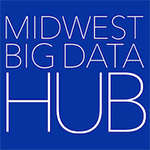By Jas Mehta
In the rapidly evolving landscape of technology, data centers stand as the backbone of our interconnected world. As demands for computational power, storage, and connectivity continue to surge, the data center ecosystem is undergoing a profound transformation. This blog post explores the interplay of emerging trends, seamlessly integrating artificial intelligence (AI), Co-Packaged Optics (CPO), Compute Express Link (CXL), and other cutting-edge technologies that are reshaping the very fabric of data centers.
Artificial intelligence has emerged as a central force propelling the evolution of data centers. The insatiable appetite for AI applications, from machine learning to deep learning, necessitates a paradigm shift in computational capabilities. Data centers are rising to the challenge by incorporating specialized hardware, such as Graphics Processing Units (GPUs) and Tensor Processing Units (TPUs), to accelerate AI workloads. This shift towards AI-centric infrastructure not only redefines the computational landscape but also sets the stage for unprecedented efficiency and capabilities within data centers.
Enter Co-Packaged Optics (CPO), a transformative technology that promises to elevate the performance and efficiency of data centers. Traditionally, optical transceivers existed as separate entities from processors, posing challenges in terms of power consumption, latency, and scalability. Co-Packaged Optics integrates these components directly into the processor package, minimizing signal losses and optimizing data transfer within the data center.
This integration not only enhances bandwidth and reduces latency but also addresses critical concerns surrounding space and energy efficiency. As data centers grapple with the escalating demand for higher data rates, CPO emerges as a game changer, streamlining connectivity for optimal performance.
Simultaneously, Compute Express Link (CXL) has garnered attention as an open industry standard facilitating high-speed, efficient connectivity between diverse devices within data centers. CXL seamlessly connects Central Processing Units (CPUs), GPUs, and other accelerators, fostering a heterogeneous computing environment. This versatility is indispensable for data centers navigating the diverse landscape of workloads, including the intensive requirements of AI and high-performance computing (HPC).
Compute Express Link’s impact extends beyond improving data coherency; it fundamentally enhances communication between processors, promising a holistic improvement in overall system performance. The adoption of this standard is gaining momentum, signaling a shift in the architectural paradigm of future data centers.
As we envision the future of data centers, it is essential to consider the broader spectrum of transformative technologies.
Quantum computing, though in its infancy, holds immense promise in solving complex problems exponentially faster than classical computers. As it matures, quantum computing could potentially revolutionize data centers, offering unprecedented computational capabilities for certain workloads.
The future of data centers is a dynamic convergence of groundbreaking technologies, where AI, CPO, CXL, and other emerging trends seamlessly intertwine. As the demand for computational power continues to soar, data centers must not only embrace but actively integrate these innovations. In doing so, they can ensure scalability, efficiency, and optimal performance in the face of evolving technological landscapes. The journey towards the next generation of data centers is an exciting one, marked by transformative technologies that pave the way for a more connected, intelligent, and sustainable future.
Get Involved
Contact the Midwest Big Data Innovation Hub if you’re aware of other people or projects we should profile here, or to participate in any of our community-led Priority Areas. The MBDH has a variety of ways to get involved with our community and activities. The Midwest Big Data Innovation Hub is an NSF-funded partnership of the University of Illinois at Urbana-Champaign, Indiana University, Iowa State University, the University of Michigan, the University of Minnesota, and the University of North Dakota, and is focused on developing collaborations in the 12-state Midwest region. Learn more about the national NSF Big Data Hubs community.
